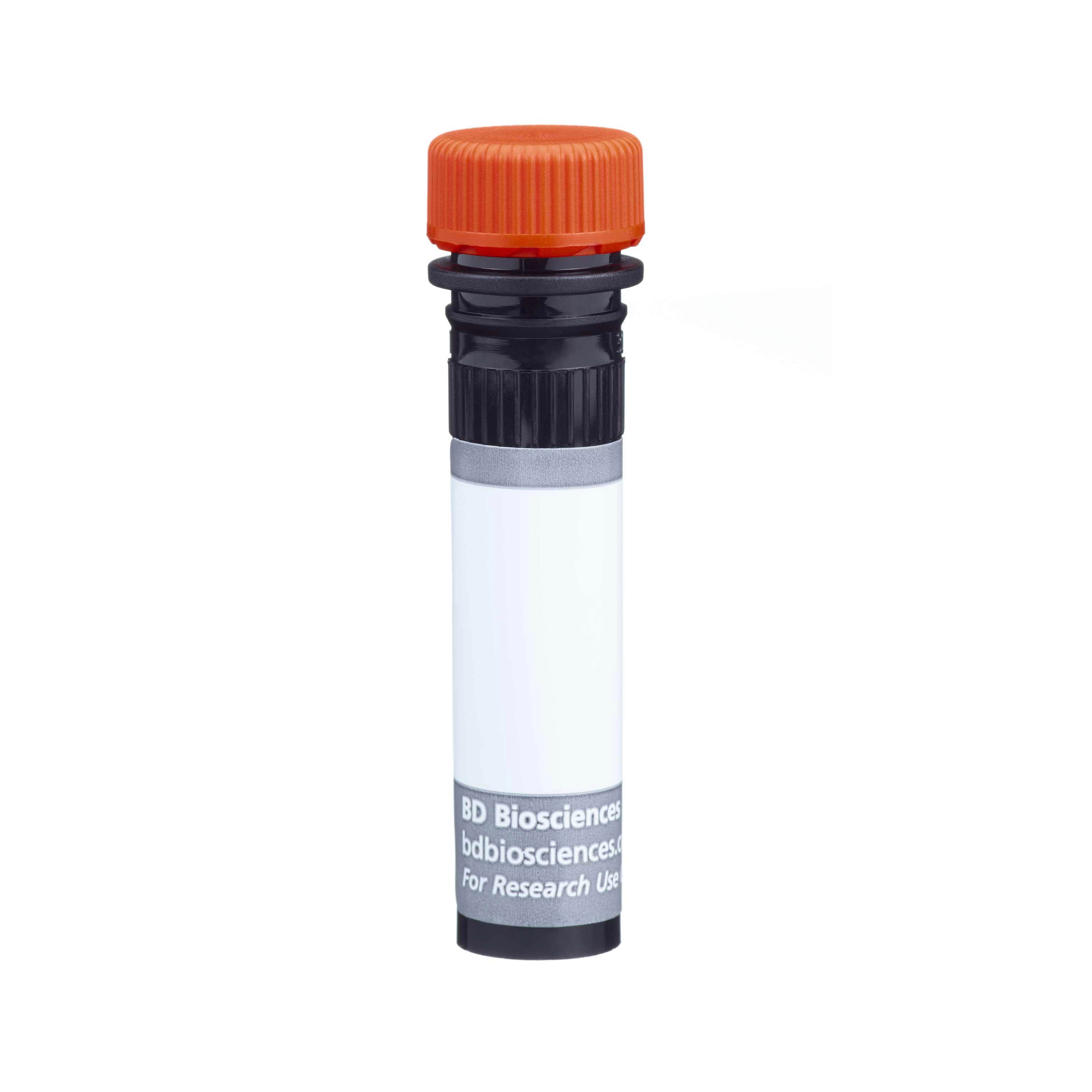The OX-17 antibody reacts with a non-polymorphic determinant of rat MHC Class II antigen, I-E equivalent. RT1D is found on peripheral B lymphocytes, thymic cortical epithelial and medullary reticular cells, epithelial cells in the adult small intestine, macrophages and dendritic cells in the intestinal lamina propria and Peyer's patches, epithelial and dendritic cells in the kidney, and activated monocytes, but not on thymocyes, erythrocytes, peripheral T cells, or brain. Its expression is upregulated on large-vessel endothelia and a variety of epithelial and glandular cells in the gastrointestinal system of rats treated with IFN-γ.
The antibody was conjugated to BD Horizon™ BUV737 which is part of the BD Horizon Brilliant™ Ultraviolet family of dyes. This dye is a tandem fluorochrome of BD Horizon BUV395 with an Ex Max of 348-nm and an acceptor dye with an Em Max at 737-nm. BD Horizon Brilliant BUV737 can be excited by the ultraviolet laser (355 nm) and detected with a 740/35 filter. Due to the excitation of the acceptor dye by other laser lines, there may be significant spillover into channels detecting Alexa Fluor® 700-like dyes (eg, 712/20-nm filter).
Due to spectral differences between labeled cells and beads, using BD™ CompBeads can result in incorrect spillover values when used with BD Horizon BUV737 reagents. Therefore, the use of BD CompBeads or BD CompBeads Plus to determine spillover values for these reagents is not recommended. Different BUV737 reagents (eg, CD4 vs. CD45) can have slightly different fluorescence spillover therefore, it may also be necessary to use clone specific compensation controls when using these reagents.






